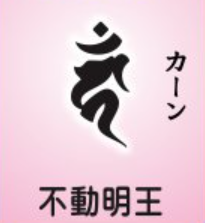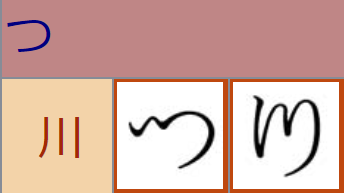-
Posts
4,276 -
Joined
-
Last visited
-
Days Won
96
Content Type
Profiles
Forums
Events
Store
Downloads
Gallery
Everything posted by SteveM
-
Very interesting to have this documentation. November 23, 1945. This was when the US army was going back and forth on whether or not family heirloom swords could be retained by their owners, or whether demilitarization meant absolutely no weapons whatsoever. I think the hardliners were in the majority in early December. But by the end of December, the negotiations had worked in the favor of allowing heirloom (i.e. art swords) to be retained by their owners. Great to see this kind of hard evidence of those times.
-
I'm out of my depth here with regard to battlefield tactics. An author named Stephen Turnbull is a well-respected writer in English of samurai history, some of his books would be worth looking at.
-
OK - now I got it. But you also have to take note of Markus's comment that says, "don’t pay too much attention to details of the armor shown." Might be better to refer to the illustrations on the site below, which show longish companion swords being worn thrust through an obi that is tied around the outside of the kusazari. As to whether or not they get in the way, @Bugyotsuji probably knows something about this, so maybe he can comment. Also, not all soldiers had the full ōyoroi outfit. https://costume.iz2.or.jp/column/554.html And also there is the possibility that the sword you showed wasn't meant to be a companion sword, but instead was a sword intended for some other use (maybe just as a short sword to be used for self-protection by someone travelling the roads, or maybe a temple offering, etc...).
-
Which link are you referring to? I can't find this link in the thread. I would be skeptical of trying to make conclusions about sword use and length by looking at old prints. Nanbokuchō seems particularly far away for any useful prints to have survived up until now. Most prints tend to be Edo period prints, and the Edo artists weren't necessarily scholars of Nanbokuchō sword usage.
-

Need help to translate Star Stamp Showa Sword
SteveM replied to War Time's topic in Translation Assistance
昭和廿年仲春 Shōwa 20, mid-spring -
Some more information about the development of the wakizashi that might be helpful. https://markussesko....08/11/the-wakizashi/
-
Right side 佐藤主計中尉 Lieutenant Satō. Unsure of the bit in blue. Looks to me like a first name Kazue, but its hard to make out. Left side 横水103 紋ナシ Yoko/mizu 103 (some kind of abbreviation for an address or location or unit number). Mon nashi (means "no family crest"). So they are manufacturer's or assembler's notes written on the tsuka.
-
Settsu is the old name of a province in Japan. It roughly corresponds to Osaka and a bit of Hyogo prefecture. "Kami" is an honorary title - means something like Governor or Lord - and these titles were awarded by the government to swordsmiths who had achieved as certain status. So Settsu-no-Kami is Lord of Settsu province. And "an excellent piece/work" is Tanobe's personal opinion. The bits before that (koitame with rounded gunome-midareba hamon) are some features that one would expect to see in a Settsu Tadayuki sword. So he is confirming the work and the signature.
-
No, just a regular mei (location + name). But I am a little suspicious of the maker, because when I search on this name, I only get hits from scam auction sites. I don't get any hits from any Japanese dealers. So it might be a maker in China, manufacturing modern replica kogatana.
-
Echizen Yasuhiro
-
OK - so the length matches the registration paper. This particular sword wouldn't have been shortened from 21cm to 14.8cm. If, for some bizarre reason, the sword had been significantly shortened, the authentication paper would be invalid because its literally judging a blade that is 21cm blade to be worthy of preservation. Anyway, the authentication paper doesn't match this sword, so it's understandable that the transaction leaves a bad taste in your mouth.
-
You can buy these old authentication papers on the internet. You can probably buy old registration papers on the internet as well. It is possible the seller found some paperwork for for a mumei tantō, and matched it with your mumei tantō to make it look like a properly registered and authenticated tantō. I don't know. But these kinds of deceptions are common in the sword world, especially when buying over the internet. What is the actual blade length of your tantō? (blade length = tip of the sword to the "machi")
-
Hiroga - aka Hiroyoshi https://nihontoclub.com/smiths/HIR530 The paper is for a blade that is 21 centimeters, while the registration card is for a blade that is 14.8 centimeters. Having said that, its always best to concentrate on the sword and not on the paper. (Its one of those sword collecting rules that we all break, over and over again.) I would rate the sword a bit higher than Ron. The rust spots are obviously a problem, but despite those I think the sword is OK, and the valuation of £700 - £1000 doesn't feel too far off the mark. Well, in its current condition it would be at the low end of that range.
-
摂州摂津守源忠行 六字有銘而忠行二代也年代元禄頃小板目鍛ヘニ 丸キ互乃目主調ノ乱刃ノ作風ヲ示ス佳品也 長壱尺五寸 歳甲辰卯月 探山識 Settsu Province "Lord of Settsu Minamoto Tadayuki" Six character signature of Tadayuki 2nd. Circa Genroku era. An excellent piece showing us koitame hada, with rounded, gunome-midareba hamon. Length 1 shaku 5 sun April 2024 Tanzan
-
NTHK paper is from 1977. It dates the sword to Tenbun (1532-1555).
-
NTHK paper attributes it to Den Taira Takada.
-
Looks like ”十" that was accidentally struck twice. Should be 十九年 (1944), but for some reason it ended up as 十十九年. Late war carelessness?
-

Old heirloom (?) tsuba translation request
SteveM replied to Deez77's topic in Translation Assistance
I agree with Moriyama-san about 林越奈 (Hayashi Etsuna) 林左治衛 intuitively I would think its Hayashi Sajie. -

Old heirloom (?) tsuba translation request
SteveM replied to Deez77's topic in Translation Assistance
The hentaigana I took that screen grab from, comes from the page below. Its the one I use most often. http://www.book-seis...jp/kana/onjun_1.html -

Help with understanding blade
SteveM replied to DateMasamune's topic in General Nihonto Related Discussion
-
These are all names of the people who signed the flag. Suzuki Hiroshi Noguchi Shizue Mizufune Isamu etc...
-
臼井定年 Usui Sadatoshi Kind of a mysterious smith. Made an appearance here on NMB a long time ago
-

Old heirloom (?) tsuba translation request
SteveM replied to Deez77's topic in Translation Assistance
I think you are right. It could be some hentaigana for つ and う (too hard to see clearly, but maybe 川 for つ). う is too hard to see, but from the others, and the overall theme, I think you've nailed it. This is the earthquake and fire that the box mentions https://en.wikipedia.org/wiki/1923_Great_Kantō_earthquake -
Ah, OK. Got it. Probably not worth it. I figured there was some issue like this, because most of the really old posts are corrupted in the same way. I think the info from Moriyama-san and Morita-san is sufficient to figure it out in this case.







